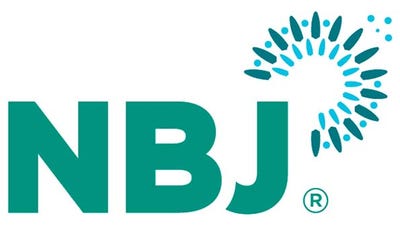'Healthy foods' industry is merging subcategories
December 1, 2006

As the smoke cleared from the low-carb crash, what looked like a meaningful shift in consumers' approach to nutrition proved to be no more than an unwelcome detour on the road to healthier food for US food companies, according to California-based Nutrition Business Journal.
Perhaps most striking is the evolving reality of the three categories of food that NBJ first sought to define and quantify as distinct subcategories in its second issue back in 1996: natural and organic, functional, and lesser evil. These subcategories are increasingly seen by manufacturers, suppliers, retailers and even consumers as part of a broader category of healthy foods. It is worth noting that healthy foods could also include enriched foods and inherently healthy foods (such as fresh fruit and vegetables), but this report will address only the three subcategories for the purpose of quantification of the market.
When NBJ first presented defined parameters and sales estimates for these subcategories, there was little crossover between them, and few companies active in more than one segment. A decade later, many major food corporations are participating in all three areas, and 'crossovers' are no longer a rarity. Whereas soy milk once provided the most obvious classification dilemma for market researchers and product marketers (should the brand emphasise functional, organic or lactose-free attributes?), many more products feature multiple benefits in 2005.
Does the 2005 example of General Mills and others converting brands to whole grain after a wave of sugar reductions the year before represent added functionality, or is whole grain really just a preferable (lesser evil) or more natural alternative to refined white grain? Regardless of how the dilemma is resolved — and NBJ does for the sake of quantification based on brand-by-brand analysis and in its detailed market research reports — it is clear that healthier foods are gaining momentum in all three categories and look likely to do so for some time.
According to NBJ research, healthy-food sales accounted for $110 billion in 2005 or 20 per cent of total food sales of $552 billion, not including food service. To this, functional foods contributed $26.7 billion or 4.8 per cent of total US food sales with considerable variation in growth and penetration rates by category. Growth in 2005 was nine per cent in functional foods compared to just under two per cent for total food sales, reflecting a resurgence in juice sales since the low-carb diet faded, growth in sports and energy drinks, and ongoing conversions in cereals.
By major product category, beverages accounted for 57 per cent of US functional foods. Breads and grains were the second largest functional subcategory at 21 per cent with cereals its largest contributor. Snack foods accounted for 10 per cent of US functional-foods sales in 2005, but the now well-chronicled fall of nutrition bars led to a sales decline in 2004 and 2005.
Over the years, many fortified and condition-specific functional-foods brands have failed worldwide, including Aviva (Novartis), &More (Marks & Spencer), Body Smarts (Pfizer), and LC1 Go! (Nestlé). Gone are Quaker's Take Heart with Reducol, Kellogg's Ensemble and Campbell's Intelligent Quisine. Today, by far the most-common outcome for products with added functional ingredients is that they sell as niche-type products.
The inherently or intrinsically healthy side of functional foods is forging ahead. Examples of intrinsic health marketing include oats, whole grain, nuts, green tea, cranberry juice, tomatoes, red wine and many more — some of them with health claims, but as often without. Trade associations have been busy promoting a range of products — none more than blueberries for their antioxidant benefits.
Sales increases are reflected in the latest USDA cash receipts, showing blueberries tallied $50 million in 1980 compared to $300 million in 2004. In the first six months of 2005, at least a dozen blueberry-juice drinks hit the shelves in the US, and launches of new products with blueberries in 2004 were nearly double the number seen in 1996.
Asked how the food industry is progressing in creating healthier food 'stock,' Marion Nestle, Paulette Goddard Professor of nutrition, food studies and public health at New York University and author of Food Politics, observed that junk-food companies have an inherent structural problem. "All they can do is make incremental, marginal changes to improve the nutritional profile of the products. This is the basic 'better-for-you' strategy.
"The companies say they are not in the business of making health foods; they are just making the products a little bit better. They are, of course, marketing the products as health foods (or at least giving that impression), but that's another matter. Whether making whole-grain Cocoa Puffs will improve the health of America's children remains to be determined."
— Extracted from NBJ's Healthy Foods Report 2006
About the Author
You May Also Like




